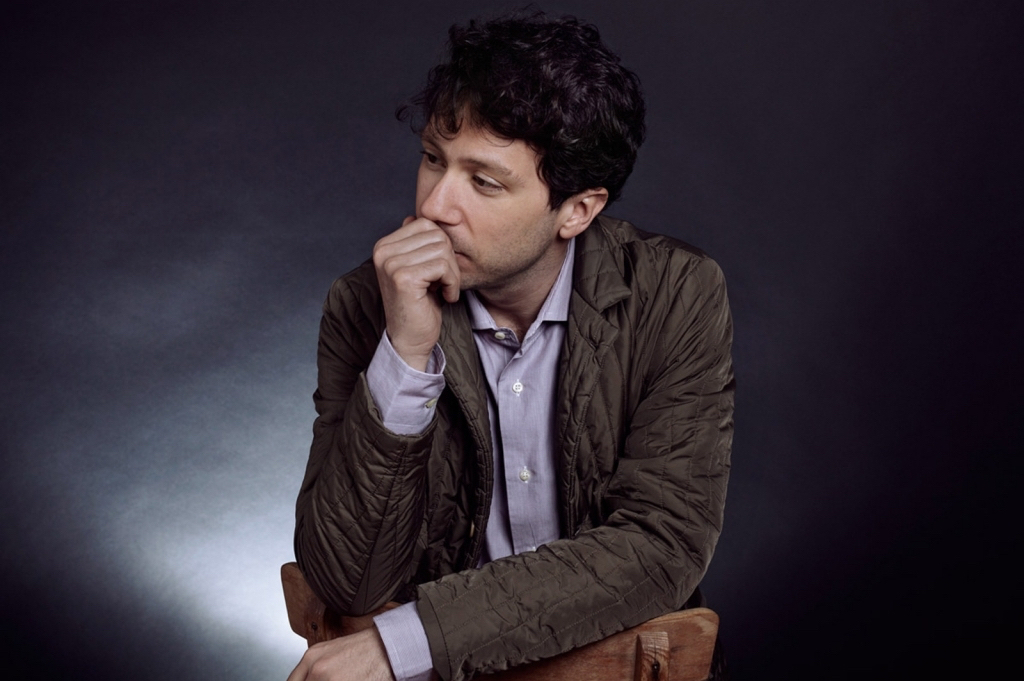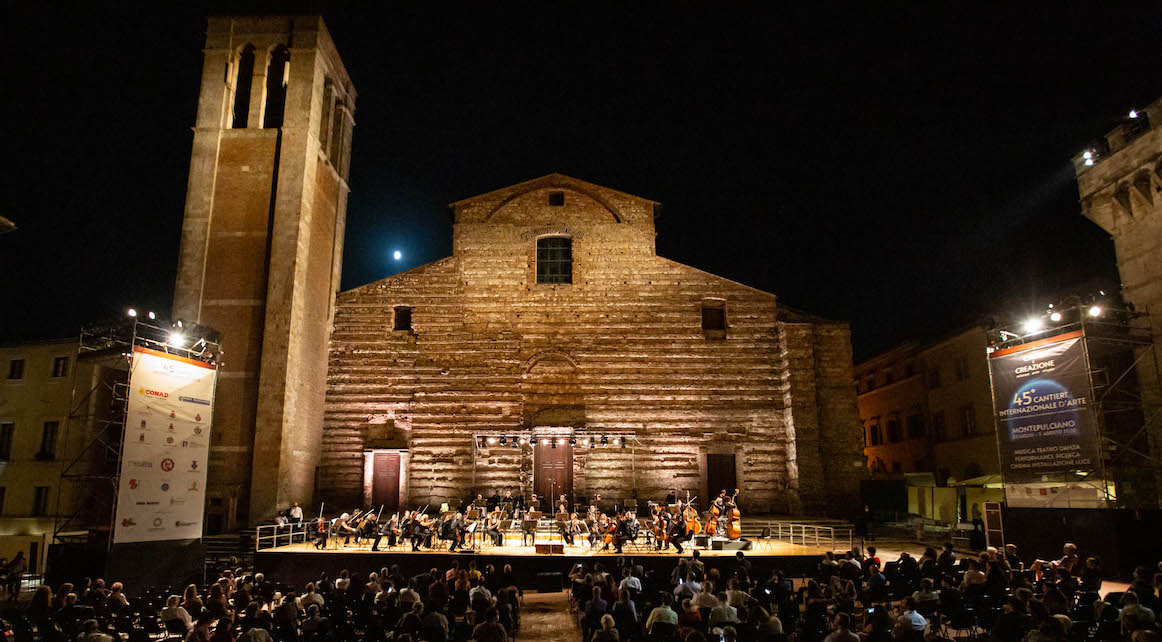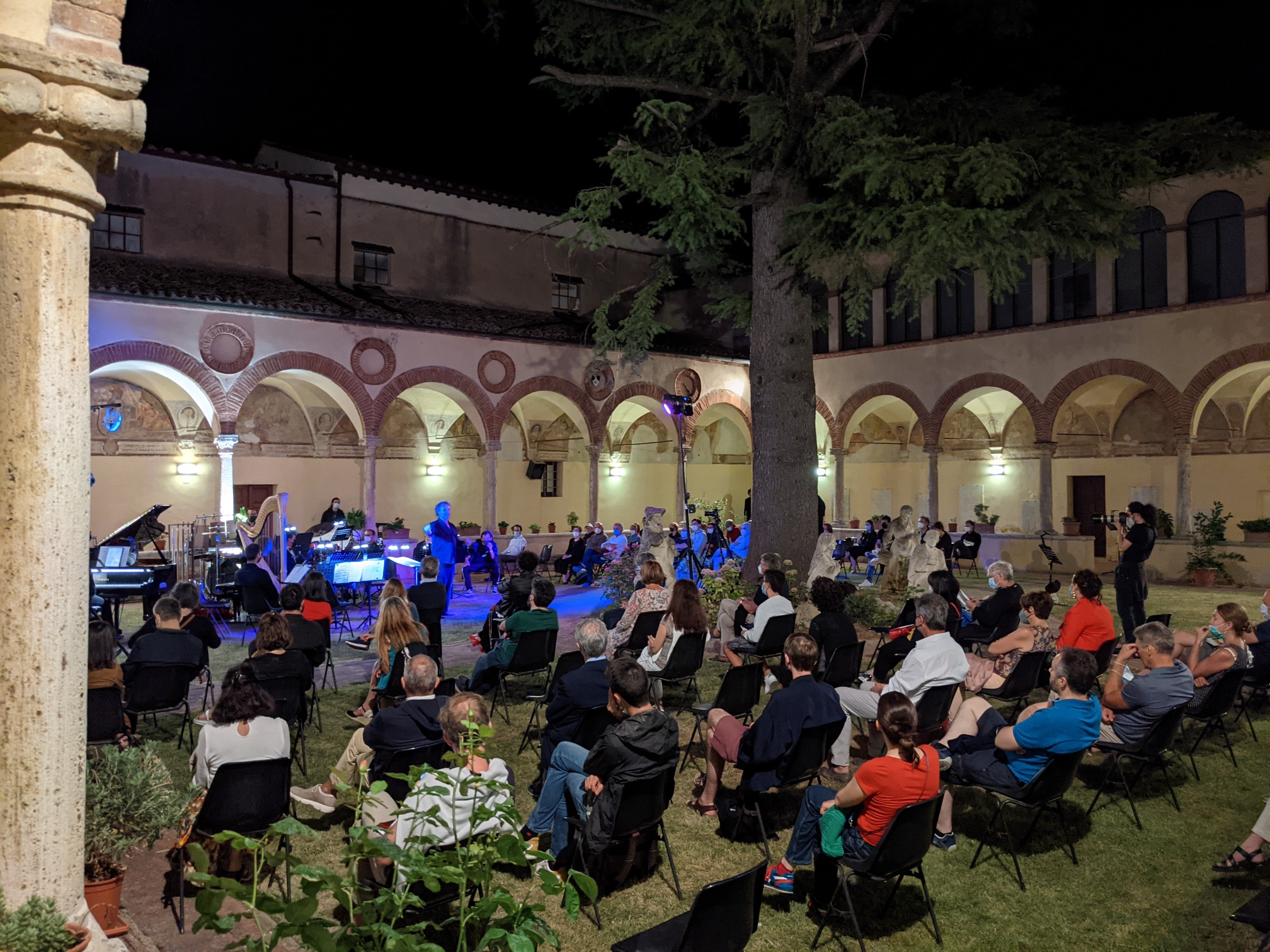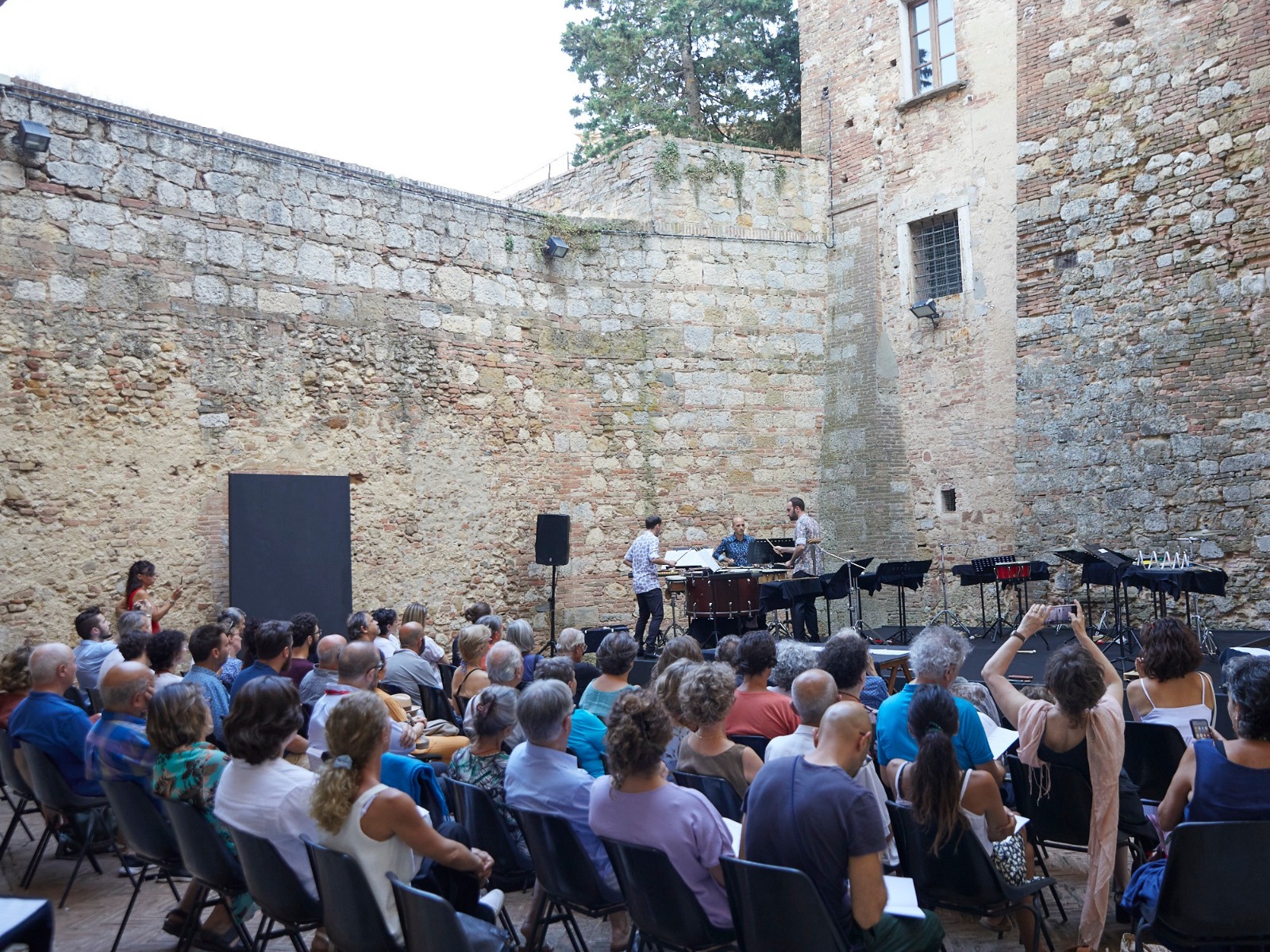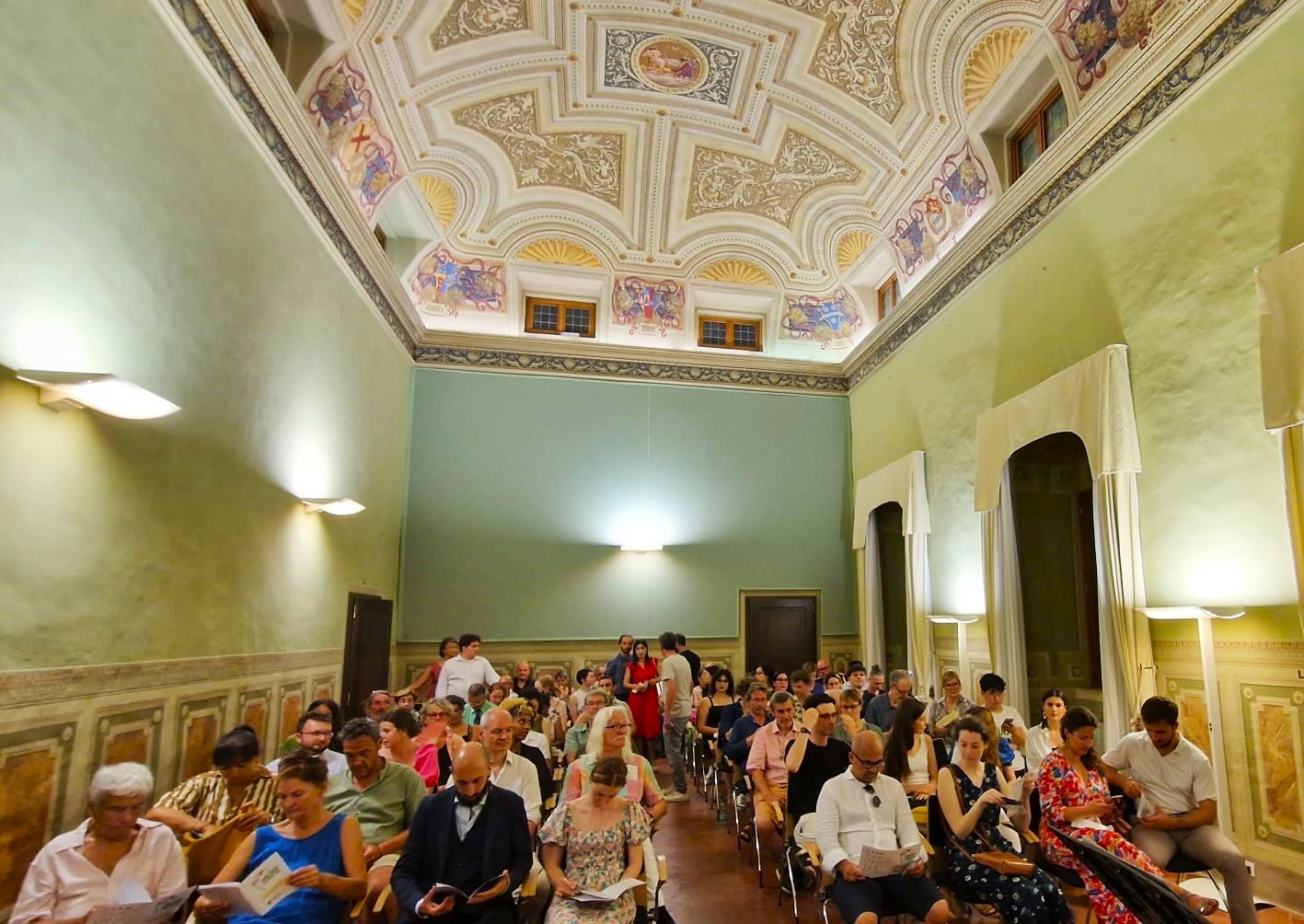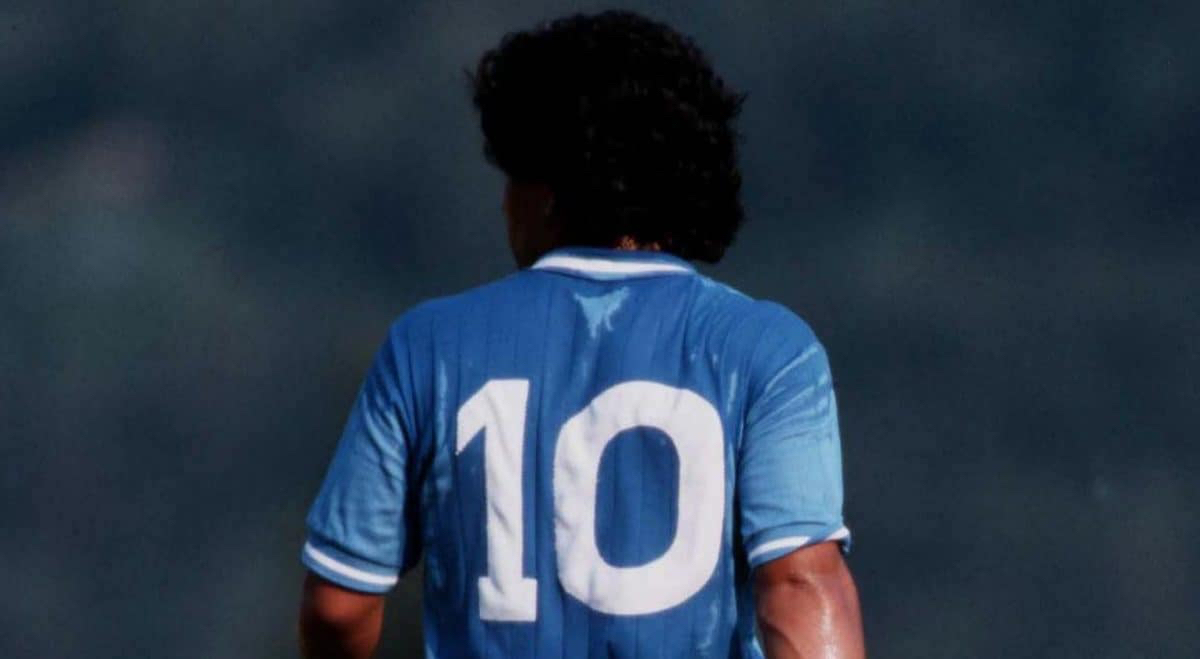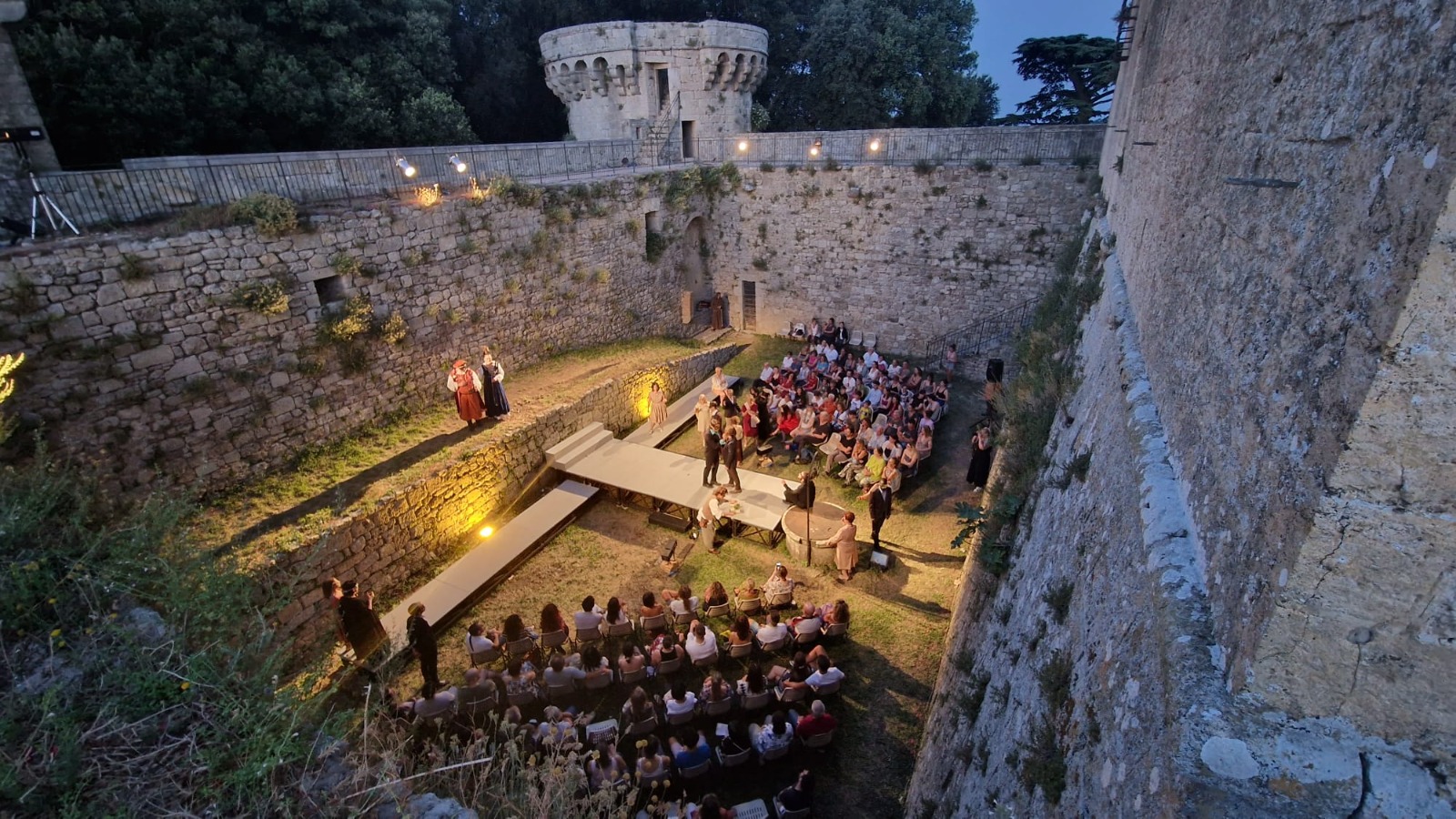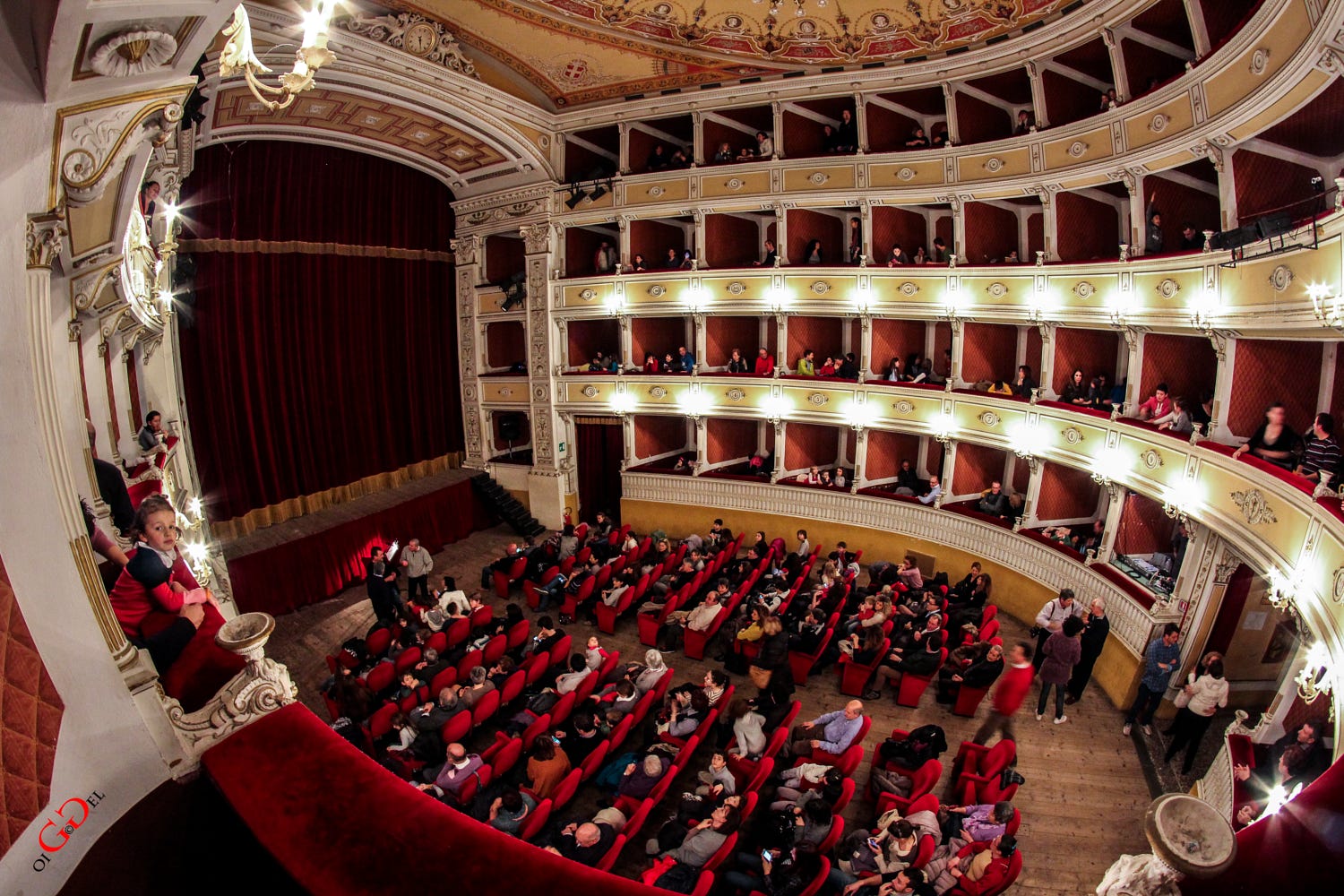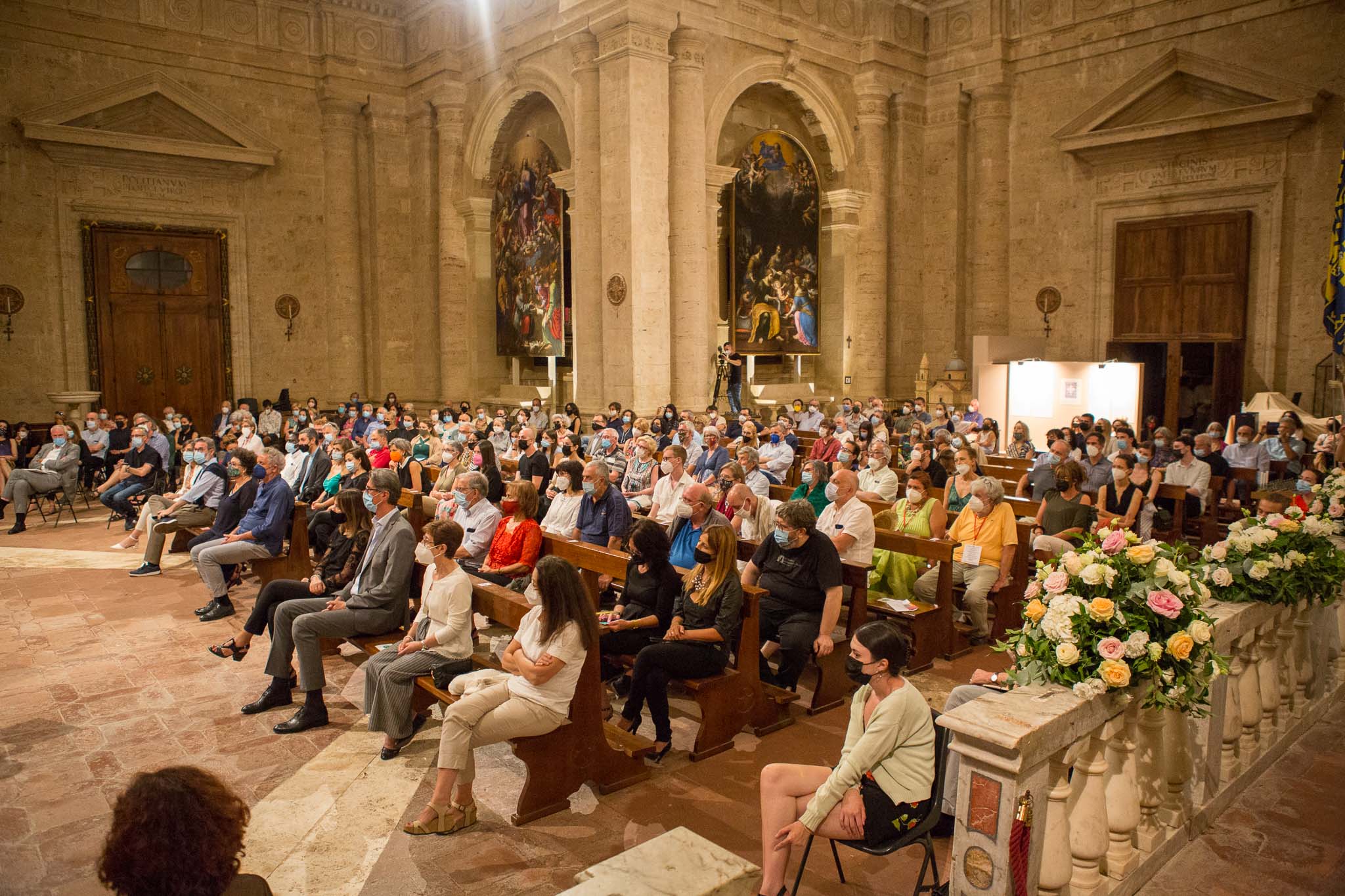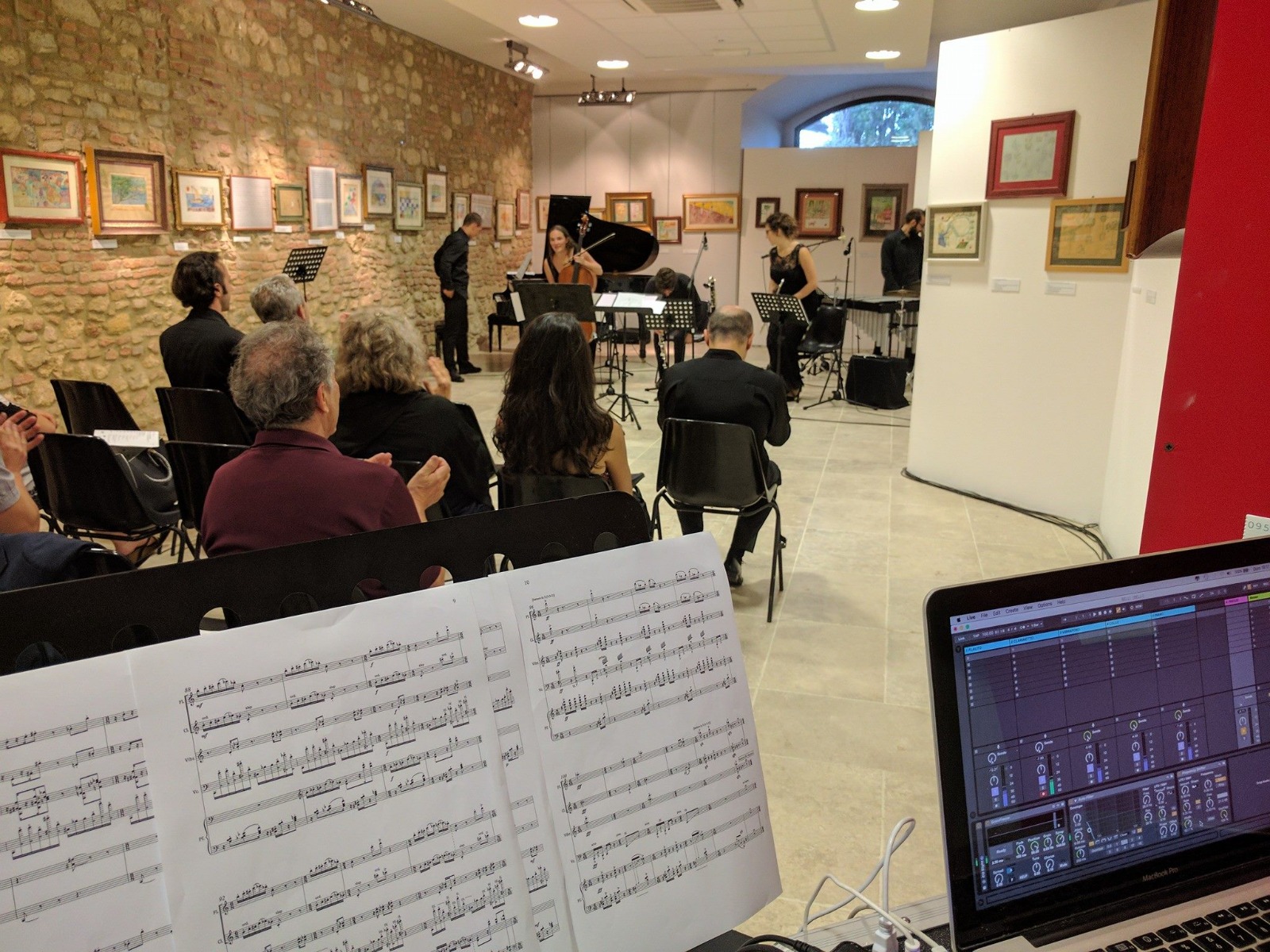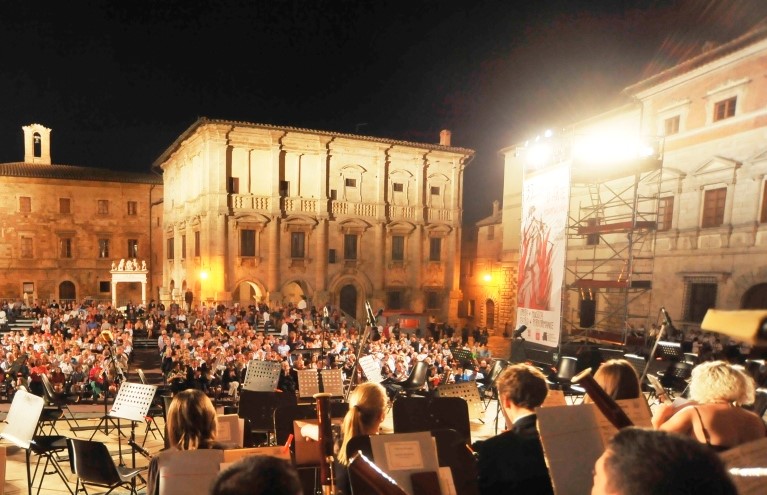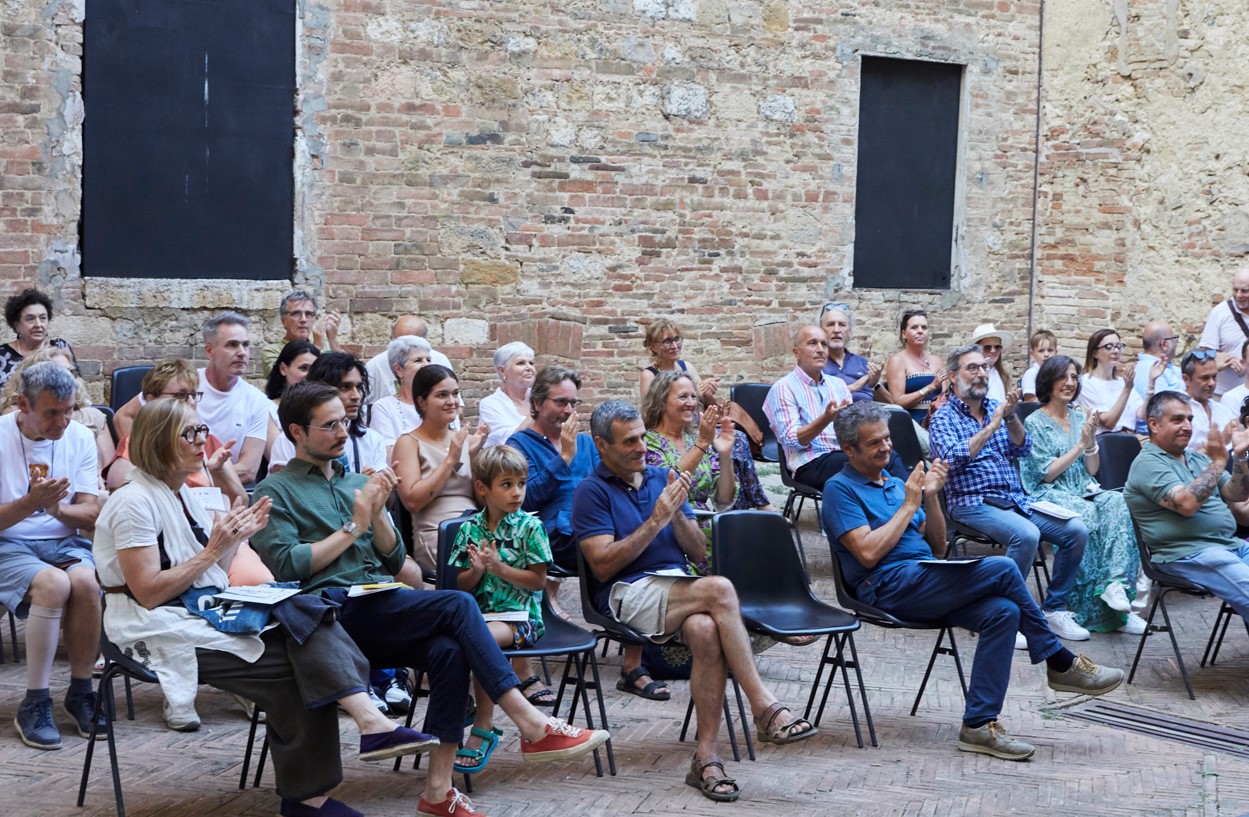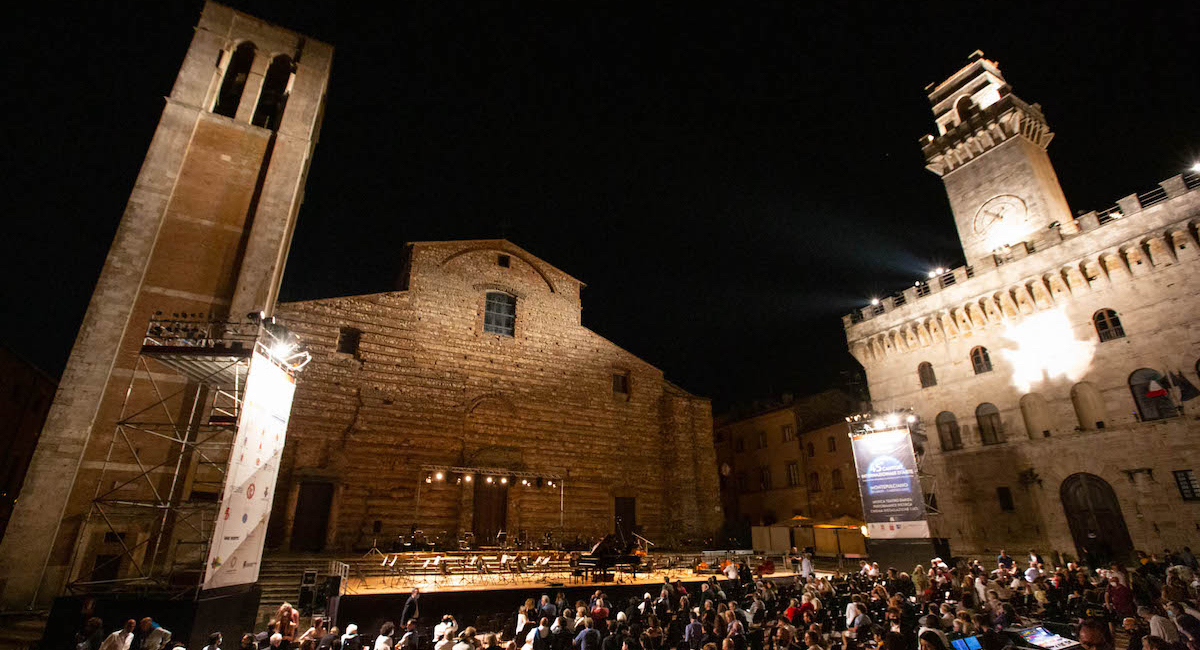EL RETABLO DE MAESE PEDRO
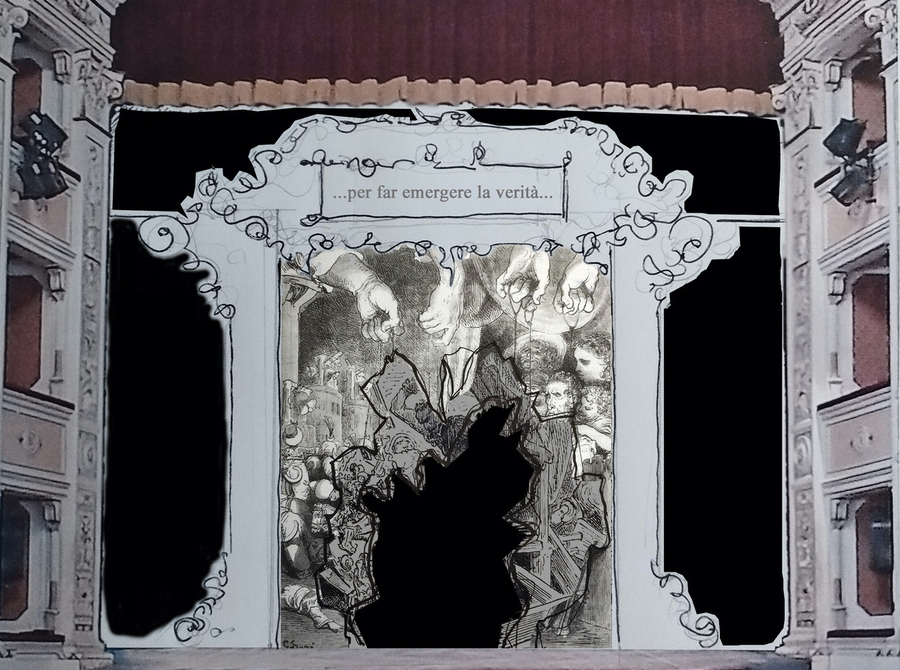
opera in un atto
musica di Manuel de Falla
IMÁGENES ERRANTES
ouverture per baritono
e orchestra
musica di Stefano Pierini
(prima assoluta, commissione 49º Cantiere)
SABATO 13 LUGLIO
Ore 21.30
DOMENICA 14 LUGLIO
Ore 18
Settore 1: €16 | Settore 2: €12
EL RETABLO DE MAESE PEDRO
opera in un atto di Manuel de Falla
Versione musicale e scenica di un episodio del Don Quixote de la Mancha di Miguel de Cervantes
libretto di Manuel de Falla, da Miguel de Cervantes
IMÁGENES ERRANTES
ouverture per baritono e orchestra di Stefano Pierini (1971)
(prima assoluta, commissione 49º Cantiere)
Michele Gamba
direttore
Anagoor
regia, scene e costumi, luci e sopratitoli
Paolo Leonardi
baritono
Giacomo Pieracci
Don Chisciotte
Giovanni Petrini
Maese Pedro
Markos Bindocci
Trujamán
Stefano Bernardini
Sancho Panza
Aurora Amirante,
Davide Calvarese,
Sauro Casucci,
Chiara Cipriani,
Simone Paddeu
ombre
Orchestra Camerata Strumentale di Prato
Domenico Grasso,
Riccardo Mostarda,
Davide Costantini
percussioni
Orhan Memed
clavicembalo
Chiara Scannapieco
arpa
Mimma Campanale
assistente del direttore
Niccolò Cantara
maestro sostituto e maestro alle luci
Gabriele Cavalletti
maestro di palco
Coproduzione Camerata Strumentale di Prato
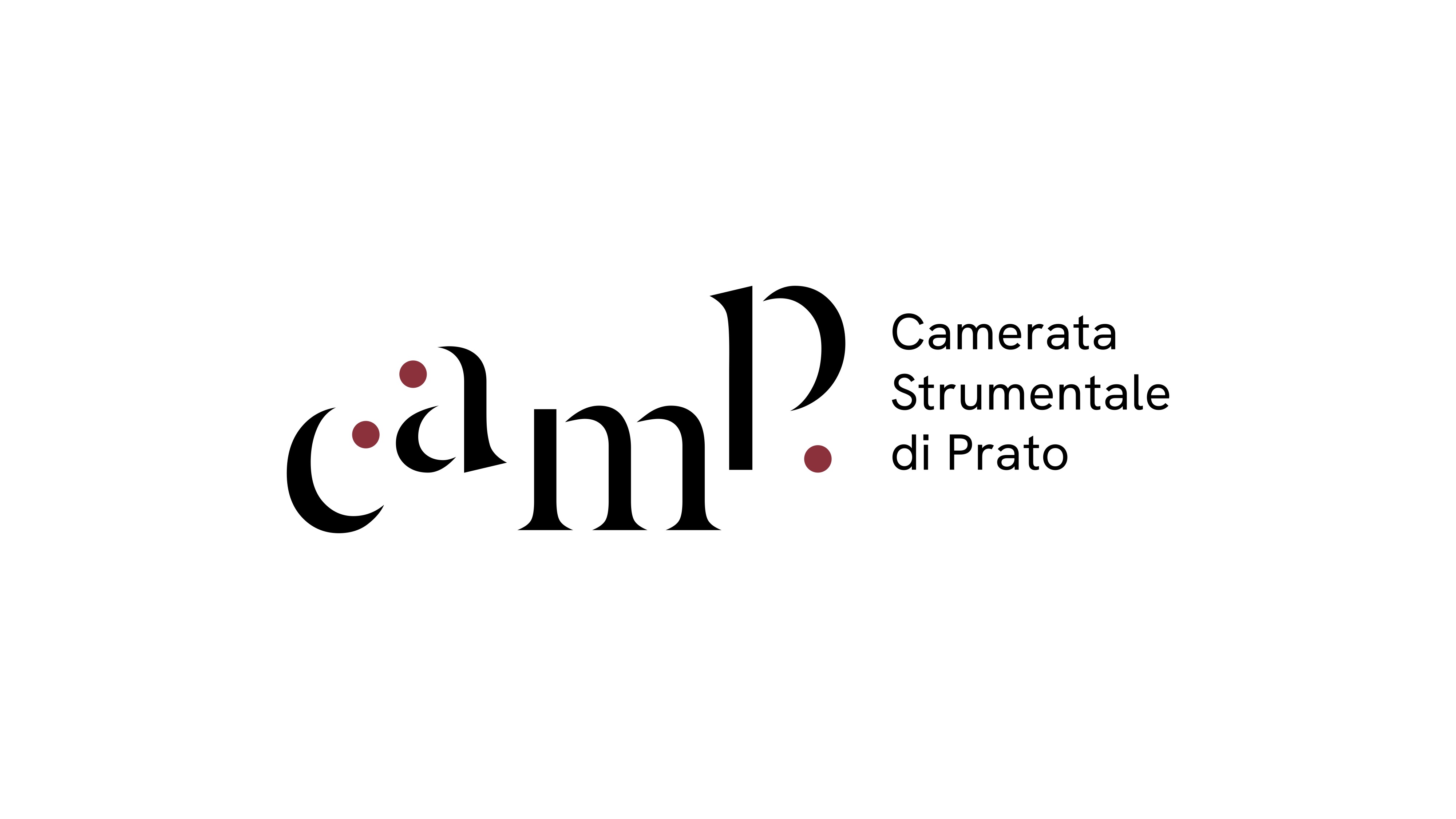
In collaborazione con
IDEA International Divertimento Ensemble Academy
Corso annuale Repertorio per Voce contemporanea
curato da Alda Caiello

Tetraktis Percussioni
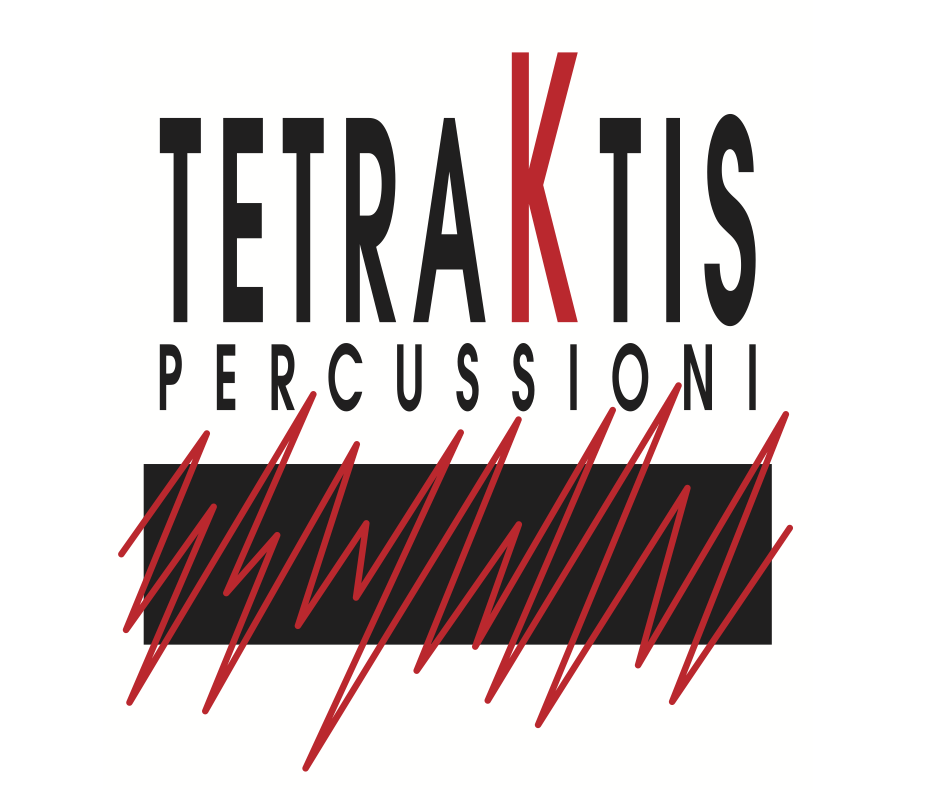
Conservatorio di Musica "F. Morlacchi" - Perugia

IMÁGENES ERRANTES
All’inizio e alla fine del Tomo I del Don Quijote, Cervantes inserisce alcuni sonetti, come era di tradizione nella letteratura picaresca dell’epoca, tutti dedicati ai personaggi principali del romanzo ed accomunati da uno sferzante senso ironico e comico.
E’ lo sguardo dell’autore che, divertendosi a scherzare sulle sue stesse creature, osserva criticamente il suo tempo: un’epoca durante la quale il Rinascimento inizia a sciogliersi in una nuova e differente realtà storica che si porta via l’uomo unitario e senza fratture dell’antichità.
Per Imágenes errantes ne ho selezionati tre, ognuno dei quali dedicato rispettivamente ai personaggi più importanti del romanzo: Don Quijote, Sancho Panza e Rocinante.
Cervantes, tuttavia, non parla in prima persona ma attraverso le voci di altri protagonisti della letteratura spagnola della sua epoca che lui sceglie per fare da portavoce nel suo gioco ironico.
In particolare, si tratta di Don Belianís de Grecia, protagonista dell’epopea più famosa di Jeronimo Fernández de la Mata, scrittore di poco precedente, che recita un’improbabile ode a Don Quijote; Babieca, la cavalla ‘babbea’ di El Cid, che disquisisce col ‘collega’ Rocinante delle infami condizioni della loro professione e di un non ben identificato soggetto, il Burlador academico argamasillesco, che ci racconta dei sogni e delle disavventure di Sancho Panza.
L’atmosfera è carnevalesca, tutto è a capo l’ingiù, e questa ‘trinità’ bizzarra si fa simbolo e simulacro della follia che, come disse Erasmo da Rotterdam, è ’l’unica cognizione positiva sul vuoto della vita’.
Don Quijote è il folle che ci fa saggi e i suoi compari lo accompagnano in questo cammino sui e ai margini; è colui che vuole riformare la realtà, la caricatura dell’utopia destinata al fallimento, è la metafora del creativo in un’epoca in cui la creatività è ridotta all’agonia da protesi tecnologiche progettate per alimentare il delirio narcisistico individuale e gli automatismi del sistema del consumo.
Imagenes errantes è la ‘sonorizzazione’ di questo mondo carnevalesco il cui protagonista principale mi è particolarmente caro e risuona in me come un lontano affetto; un irriducibile radicale dell’etica dotato di grande resilienza e, come immaginava Orson Welles, resistente persino alla bomba atomica.
Probabilmente la pervasività di Don Quijote nel linguaggio e nell’immaginario collettivo suggerisce che il suo significato va a toccare le profondità primordiali dell’essere umano e ciò, forse, ci fa pensare che in ognuno di noi ci sia un po’ di Don Quijote...
(Stefano Pierini)
IMÁGENES ERRANTES
At the beginning and end of Volume I of Don Quixote, Cervantes inserts some sonnets, as was the tradition in the picaresque literature of the time, all dedicated to the main characters of the novel and united by a scathing sense of irony and comedy.
It is the gaze of the author who, having fun joking about his own creatures, critically observes his time: an era during which the Renaissance begins to dissolve into a new and different historical reality that takes away unitary man and without fractures of antiquity.
For Imágenes errantes I selected three, each dedicated respectively to the most important characters of the novel: Don Quixote, Sancho Panza and Rocinante.
Cervantes, however, does not speak in the first person but through the voices of other protagonists of Spanish literature of his era who he chooses to act as spokespersons in his ironic game.
In particular, we are talking about Don Belianís de Grecia, protagonist of the most famous epic by Jeronimo Fernández de la Mata, a slightly earlier writer, who recites an unlikely ode to Don Quixote; Babieca, El Cid's 'silly' mare, who discusses with her 'colleague' Rocinante the infamous conditions of their profession and an unidentified subject, the Argamasillesque academic Burlador, who tells us about the dreams and misadventures of Sancho Panza.
The atmosphere is carnival-like, everything is upside down, and this bizarre 'trinity' becomes a symbol and simulacrum of madness which, as Erasmus of Rotterdam said, is 'the only positive cognition about the emptiness of life'.
Don Quixote is the madman who makes us wise and his cronies accompany him on this journey and to the edges; he is the one who wants to reform reality, the caricature of utopia doomed to failure, he is the metaphor of creative talent in an era in which creativity is reduced to agony by technological prostheses designed to fuel individual narcissistic delirium and the automatisms of the system of consumption.
Imagenes errantes is the 'sound version' of this carnival world whose main protagonist is particularly dear to me and resonates in me like a distant affection; an irreducible ethical radical endowed with great resilience and, as Orson Welles imagined, resistant even to the atomic bomb.
Probably the pervasiveness of Don Quixote in language and in the collective imagination suggests that its meaning touches the primordial depths of the human being and this, perhaps, makes us think that there is a bit of Don Quixote in each of us. ..
(Stefano Pierini)
el RETABLO
“Cos'è la vita? Delirio.
Cos'è la vita? Illusione, appena chimera ed ombra, e il massimo bene è un nulla, ché tutta la vita è sogno, e i sogni, sogni sono.”
Calderon de la Barca
“È Maya, il velo ingannatore, che avvolge gli occhi dei mortali e fa loro vedere un mondo del quale non può dirsi né che esista, né che non esista; perché ella rassomiglia al sonno, rassomiglia al riflesso del sole sulla sabbia, che il pellegrino da lontano scambia per acqua”
Schopenhauer
“Quella folgore-guida, non pedagogizzabile, è connessa ad uno squarcio, al venir meno di tutta una catena di rimozioni durate per secoli, è il cortocircuito di una fine e di un inizio: che tuttavia offre nuove ragioni anche a quanto resta e deve restare nascosto o seminascosto.”
Andrea Zanzotto sulla Tempesta di Giorgione
“Il velo del Tempio si squarciò” Mc 15, 38
LA LACERAZIONE DEL TEATRINO DI MASTRO PEDRO
Da sempre campione di un mondo in crisi, Don Chisciotte è divenuto grazie ad una celebre opera del filosofo francese Michel Foucault, Le parole e le cose, anche l’emblema o meglio il protagonista esemplare di una crisi del sapere e della conoscenza, che avrebbe caratterizzato il passaggio non privo di stravolgimenti politici, sociali, antropologici e psicologici tra l’epoca rinascimentale ancora impregnata di una visione fideistica del mondo, e l’alba di una nuova epoca, positiva e classificatoria, dove calcolo, misura e ordine sono i paradigmi di una nuova conoscenza che sopperiscono alla separazione fra “le choses et les mots”.
Il personaggio del romanzo di Miguel Cervantes incarna in prima persona il limite, la discontinuità tra questi modi del sapere, scontrandosi direttamente con una personale disfunzione della conoscenza. Don Chisciotte impersona la radicalità di tale crisi, mostrandosi profondamente compenetrato con il sistema di pensiero rinascimentale, e, per contrasto, inadatto e fortemente in lotta con il mondo in cui vive.
Questo attaccamento a un modo di pensare e di vedere il mondo - ma anche a un mondo in sé - ormai perduto, emerge chiaramente dal modo di agire di Don Chisciotte, le cui gesta appaiono sempre motivate da segni visibili nella realtà che ricordano per analogia (come in una similitudine dell’epica) quanto raccontato dal mito, dalla poesia, dalla letteratura: gli immensi mulini a vento, la macchina mostruosa delle loro pale, l’energia che essa genera e che dunque essi possiedono è come quella di mitici giganti, così dunque, per Chisciotte, i mulini sono giganti a cui dare battaglia. Egli continua ad affermare in ogni situazione una visione interamente permeata dalle similitudini della poesia, le quali costituiscono, per lui, l’unico strumento adatto a conoscere e comprendere la realtà: il fondamento di una vera e propria fede. Secondo questa mistica l’uniformità tra le parole e le cose continua ad esistere e Chisciotte si ostina ad affermare un’inattuale sopravvivenza dell’antico nel nuovo, del mondo della poesia dove tutto si tiene, contro il mondo del calcolo che separa il mondo dalla sua rappresentazione.
Nel romanzo di Miguel de Cervantes, l’episodio del teatrino del Mastro Pedro rappresenta l’esempio di come anche una forma di finzione evidente ed esibita come quella dello spettacolo dei burattini possa costituire per Don Chisciotte l’ennesima occasione d’errore: una fra le numerose scene in cui l’incapacità
di distinguere fra il piano della realtà e quello della finzione induce Don Chisciotte all’equivoco.
Il contesto, questa volta, è lo spettacolo di burattini “La liberazione di Melisendra”, una storia tratta dall’epica cavalleresca di cui Don Chisciotte ha letto nei suoi amati libri, e che dunque considera assolutamente attendibile. Centrale, nell’episodio, è la funzione giocata dal retablo ovvero, in lingua spagnola, il quadro della scena, il quadro della rappresentazione ovvero la cornice del teatro: cioè il limite, la frontiera tra la razionalità e l’immaginazione, ovvero il teatro come sostanza stessa, persino ostentata, della “rappresentazione”.
“tutto da ogni parte circondato da candeline di cera accese, che lo rendevano vistoso e splendente”
A questo episodio si rifà fedelmente la composizione di De Falla che, per elementi compositivi, pare intuire con largo anticipo le riflessioni di Foucault. Laddove infatti in Cervantes il giovane banditore declama la vicenda indicando le marionette e contemporaneamente si sovrappone con la sua voce all’azione scenica, nell’opera di De Falla i due momenti sono scissi, come a sottolineare la distanza tra le parole, il linguaggio, la letteratura e le cose.
Nella restituzione di Anagoor, al di là di sipari decorati con riproduzioni giganti delle celeberrime incisioni di Gustave Doré per il Don Chisciotte (pubblicate nel 1861), l’opera dei pupi o il teatrino dei burattini è sostituito da un teatro d’ombre, simbolica evidenza di una diafana evanescenza, labile parvenza di realtà, caverna platonica, inafferrabile sogno, fantasmi, a sancire, se ce ne fosse mai bisogno, l’inefficacia della rappresentazione, il suo essere effimera come la vita degli umani, un sogno d’ombra. Questo teatrino di carta, con i suoi fragili sipari che schermano e proteggono, dichiara la relazione del Teatro col regno dei morti.
Intorno al teatrino, e alla luce tremolante delle sue candeline, prendono forma tutte le ambiguità costitutive della relazione fra la dimensione poetica e la conoscenza create dalla coscienza di Don Chisciotte, incapace di comprendere il frame finzionale, appunto di rappresentazione, dello spettacolo. Tale incapacità si mostra non appena Don Chisciotte prende posto nel pubblico, laddove, reputando scorretta la restituzione della storia, egli interrompe il burattinaio e lo rimprovera:
“Questo poi no! [...] Mastro Pietro è completamente fuori strada, perché non usano campane fra i mori, ma tamburi e un tipo di dolcemele che rassomiglia alle nostre ciaramelle...”
“Giovanotto, giovanotto [...] continuate la vostra storia in linea retta, e non cacciatevi in curve o trasversali, perché per potere attingere la verità su di un fatto occorrono molte prove e controprove”. Don Chisciotte mostra così di non cogliere lo sdoppiamento di livello causato dalla rappresentazione. “Ferito”, anzi, dall’utilizzo inaccurato dei suoi modelli interviene per correggere lo spettacolo, infrangendone i codici. Come presentendo i sintomi di uno svuotamento di senso della poesia, ma anche di una visione del mondo e del mondo stesso, Don Chisciotte avverte il manifestarsi di una volgarità di fondo, sentendo come blasfemo l’utilizzo di ciò che per lui è sacro, scoprendo che la poesia, per il senso comune, si presenta in forme atrofiche, astratte, non più morali. Il suo gesto appare perciò come un tentativo di riaffermare, contro il tempo privo di profondità e di altezza in cui ormai si trova immerso, il tempo di un’azione etica.
Poco dopo, Don Chisciotte dà un’ulteriore prova di incapacità di lettura, mutata tuttavia di segno. Di fronte alla scena in cui Melisendra e Don Gaiferos fuggono, Don Chisciotte passa dal distacco “critico” all’immedesimazione, travolto dal pathos della narrazione, e finendo per credere di poter salvare Melisendra e Don Gaiferos. Egli si alza in piedi e attacca il burattinaio, ritenendolo colpevole:
“Io non potrò permettere che in vita mia, e al mio cospetto, si faccia un torto a un così famoso cavaliere e ardimentoso amante come don Gaiferos. Fermatevi, malnata canaglia, guardatevi dal seguirlo e dal perseguitarlo, o dovrete battervi con me.”
Don Chisciotte considera le vicende narrate non solo reali, ma anche come se stessero realmente avvenendo in quel preciso istante davanti ai propri occhi. La sua esperienza di fruizione appare ora fondata su quella stessa condizione di sospensione dell’incredulità che egli vive nel quotidiano, una disposizione all’incanto, ma applicata in una forma tanto radicale da indurlo a credere che il tempo della finzione, ovvero il tempo in cui si svolge la rappresentazione, coincida con il presente. Si genera così un importante paradosso: se solitamente per Don Chisciotte è la realtà a piegarsi alle leggi della finzione (i mulini a vento che sono come dei Giganti, devono per forza essere dei Giganti), stavolta è la finzione a dover essere riportata alla coerenza e alla somiglianza con la verità: la vicenda agita sulla scena è tanto coinvolgente da essere per forza autentica. Un simile capovolgimento rende evidente il radicale rifiuto di Don Chisciotte del «principio di realtà», ma soprattutto rivela (per i paradigmi del tempo dell’ordine, della misura e del calcolo) il pericolo connesso al suo modo di pensare, la componente di follia che esso sostanzia.
Pensando e sentendo la scena del teatro come fosse la realtà, Don Chisciotte, crede i protagonisti in pericolo di morte, e sguaina la spada per difenderli da chi sta dando loro la caccia. In questo modo, egli provoca non solo metaforicamente la rottura della quarta parete della finzione teatrale. Distruggendo il teatrino e le sue marionette, «buttando giù questo, decapitando quello, storpiandone uno, schiacciandone altri», Don Chisciotte precipita in un disperato «dissennato furore» che finisce per scardinare la rappresentazione, “facendo strage” della macchina teatrale.
Invadendone il limite, non rispettandone i codici, squarciandone il fondale, Don Chisciotte abbatte e insieme oltrepassa la frontiera del teatro e, infine, entra nel teatro stesso, rompe e confonde i confini fra il passato e il presente, fra l’immaginario e la realtà brutale, generando l’intersezione tra due mondi. Per attualizzare tutto questo, Don Chisciotte non deve solo attraversare la frontiera, deve farsi frontiera e teatro. Deve superare la propria condizione marginale e prendere coscienza della fine del suo mondo. Fuori dal limite, Don Chisciotte non può vivere; ma deve assumersi il ruolo di soglia, di strumento di transito. Don Chisciotte stesso, con il teatro, è la lacerazione, il varco.
(Simone Derai)
el RETABLO
“What is life? Delirium.
What is life? Illusion, just chimera and shadow, and the greatest good is nothing, because all life is a dream, and dreams, dreams they are."
Calderon de la Barca
“It is Maya, the deceiving veil, which envelops the eyes of mortals and makes them see a world of which it cannot be said either that it exists or that it does not exist; because it resembles sleep, it resembles the reflection of the sun on the sand, which the pilgrim from afar mistakes for water"
Schopenhauer
“That guiding lightning bolt, which cannot be considered a teacher, is connected to a rupture, to the disappearance of a whole chain of displacements that have lasted for centuries, it is the short circuit of an end and a beginning: which however also offers new reasons for what remains and must remain hidden or half-hidden.”
Andrea Zanzotto on Giorgione's Tempest
“The veil of the Temple was torn” Mk 15, 38
THE TEAR OF MASTRO PEDRO'S THEATRE
Always the champion of a world in crisis, Don Quixote has also become, thanks to a famous work by the French philosopher Michel Foucault, Words and Things, the emblem or rather the exemplary protagonist of a crisis of learning and knowledge, which would have characterized the passage not wanting political, social, anthropological and psychological upheavals between the Renaissance era still imbued with a fideistic vision of the world, and the dawn of a new era, positive and classificatory, where calculation, measurement and order are the paradigms of a new knowledge that provide for the separation between “le choses et les mots”.
The character in Miguel Cervantes' novel embodies firsthand the limit, the discontinuity between these ways of knowing, directly clashing with a personal dysfunction of knowledge. Don Quixote personifies the intransigence of this crisis, showing himself to be deeply imbued with the Renaissance system of thought, and, by contrast, unsuitable and strongly at war with the world in which he lives.
This attachment to a now lost way of thinking and seeing the world - but also to a world in itself, clearly emerges from the behaviour of Don Quixote, whose deeds always appear motivated by visible signs in reality that they recall by analogy ( as in a simile of the epic) that which is told by myth, poetry, literature: the immense windmills, the monstrous machine of their blades, the energy that it generates and that they therefore possess is like that of mythical giants, so therefore, for Quixote, the mills are giants to do battle with.
He continues to affirm in every situation a vision entirely permeated by the similes of poetry, which constitute, for him, the only suitable tool for knowing and understanding reality: the foundation of a true faith.
According to this mysticism, the uniformity between words and things continues to exist and Quixote persists in affirming an outdated survival of the old in the new, of the world of poetry where everything is contained, against the world of calculation that separates the world from its representation.
In Miguel de Cervantes' novel, the episode of Master Pedro's little theater represents the example of how even a form of evident and exhibited fiction such as that of the puppet show can constitute for Don Quixote yet another occasion for error: one of the numerous scenes in which the incapacity to distinguish between the plain of reality and that of fiction leads Don Quixote to misunderstanding.
The context, this time, is the puppet show "The Liberation of Melisendra", a story taken from the chivalric epic that Don Quixote read about in his beloved books, and which he therefore considers absolutely reliable.
Central to the episode is the function played by the retablo, the tableau of the scene, the tableau of the representation or the picture-frame of the theatre: that is the limit, the frontier between rationality and imagination, or the theatre as the very substance, even ostentatious, of "representation".
“everything surrounded on every side by lit wax candles, which made it showy and shining”
De Falla's composition faithfully refers to this episode and, due to its compositional elements, seems to perceive Foucault's reflections well in advance. In fact, whereas in Cervantes the young auctioneer declaims the story by pointing to the puppets and at the same time superimposes himself with his voice on the stage action, in De Falla's work the two moments are separated, as if to underline the distance between the words, the language, literature and things.
In the restoration of Anagoor, beyond curtains decorated with giant reproductions of Gustave Doré's famous engravings for Don Quixote (published in 1861), the puppet theatre is replaced by a theatre of shadows, symbolic evidence of a diaphanous evanescence, a fleeting semblance of reality, Platonic cave, elusive dream, ghosts, to establish, if there were ever need, the ineffectiveness of representation, its being ephemeral like the life of humans, a dream of shadow.
This paper theatre, with its fragile curtains that shield and protect, declares the Theatre's relationship with the kingdom of the dead.
Around the little theatre, and in the flickering light of its candles, all the constituent ambiguities of the relationship between the poetic dimension and the knowledge created by Don Quixote's conscience take shape, incapable of understanding the fictional frame, exactly as intended, of the show.
This inability is shown as soon as Don Quixote takes his seat in the audience, where, considering the rendering of the story incorrect, he interrupts the puppeteer and reproaches him:
“Not this! [...] Master Pietro is completely off the mark, because they don't use bells among the Moors, but drums and a type of dulcimer that resembles our sharm..."
“Young man, young man [...] continue your story in a straight line, and don't get into curves or tangents, because to be able to get to the truth about a fact requires a lot of evidence and counter-evidence”
Don Quixote thus shows that he does not grasp the split level caused by the representation. “Wounded”, indeed, by the inaccurate use of his models he intervenes to correct the show, breaking its rules.
As if presenting the symptoms of an emptying of the meaning of poetry, but also of a vision of the world and of the world itself, Don Quixote senses the manifestation of an underlying vulgarity, feeling the use of what is sacred for him as blasphemous, discovering that poetry, according to common sense, presents itself in atrophic, abstract, no longer moral forms.
His gesture therefore appears as an attempt to reaffirm, against the time devoid of depth and height in which he now finds himself immersed, the time of ethical action.
Shortly afterwards, Don Quixote gives further proof of his inability to read, although the meaning has changed.
Faced with the scene in which Melisendra and Don Gaiferos flee, Don Quixote passes from "critical" detachment to empathy, overwhelmed by the pathos of the narrative, and ending up believing that he can save Melisendra and Don Gaiferos. He stands up and attacks the puppeteer, deeming him guilty:
“I will not be able to allow in my life, and in my presence, an injustice to be done to such a famous knight and daring lover as Don Gaiferos. Stop, you wicked scoundrel, be careful not to follow him and persecute him, or you will have to fight with me."
Don Quixote considers the events narrated not only real, but also as if they were really happening at that precise moment before his own eyes.
His experience of enjoyment now appears to be based on that same condition of suspension of disbelief that he experiences in everyday life, a disposition to be enchanted, but applied in such a radical form as to lead him to believe that the time of fiction, or rather the time in which the representation takes place, coincides with the present.
An important paradox is thus generated: if usually for Don Quixote it is reality that bends to the laws of fiction (the windmills that are like giants must necessarily be giants), this time it is the fiction that must be brought back to coherence and to the resemblance to the truth: the story unfolding on the scene is so engaging as to be authentic effectively.
Such a reversal makes Don Quixote's radical rejection of the "reality principle" evident, but above all it reveals (for the paradigms of the time of order, measurement and calculation) the danger connected to his way of thinking, the component of madness which it substantiates.
Thinking and feeling the theatre scene as if it were reality, Don Quixote believes the protagonists are in danger of death and draws his sword to defend them from those who are hunting them. In this way, he not only metaphorically causes the breaking of the fourth wall of theatrical fiction, destroying the theatre and its puppets, "throwing down this one, beheading that one, maiming one, crushing others", Don Quixote falls into a desperate "mad fury" which ends up unhinging the performance, "wreaking havoc" on the theatrical machine.
By invading its limits, not respecting its codes, tearing apart its backdrop, Don Quixote demolishes and at the same time goes beyond the frontier of the theatre and, finally, enters the theatre itself, breaking and confusing the boundaries between the past and the present, between the imaginary and the brutal reality, generating the intersection between two worlds.
To actualize all this, Don Quixote must not only cross the border, he must become a frontier and a theatre. He must overcome his marginal condition and become aware of the end of his world. Out of bounds, Don Quixote cannot live; but it must assume the role of threshold, of transit instrument. Don Quixote himself, with the theatre, is the laceration, the gap.
(Simone Derai)
 Sostieni i progetti
Sostieni i progetti Amministrazione Trasparente
Amministrazione Trasparente Contatti
Contatti


